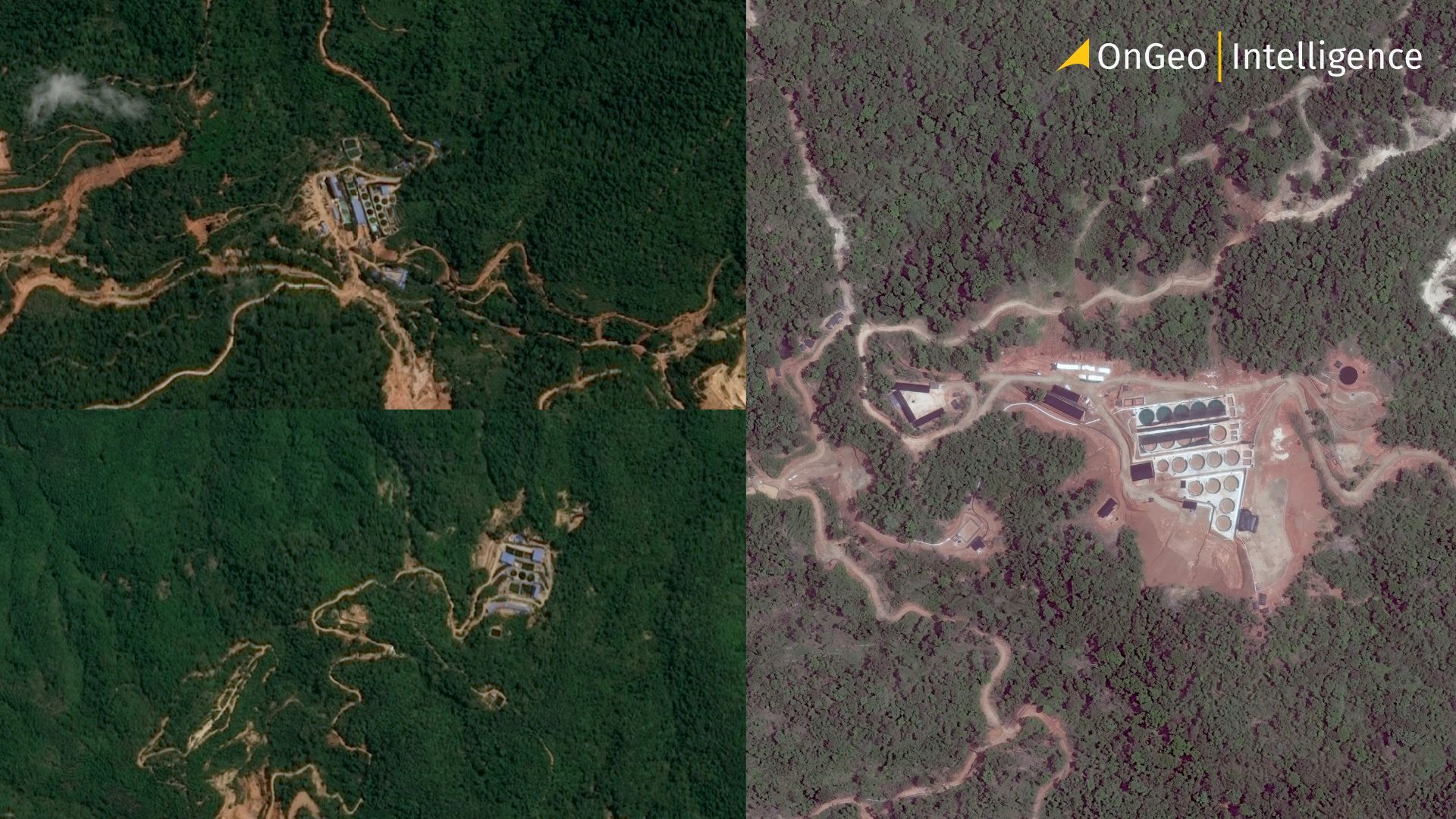
Satellite Imagery Exposes 19 Rare Earth Mines Threatening Mekong River Pollution
In a startling revelation that echoes past environmental disasters, Satellite Imagery Report provided by OnGeo Intelligence and video footage have uncovered 19 rare earth element (REE) mines in eastern Shan State, Myanmar, perilously close to the Mekong River. This development raises alarms about potential toxic heavy metal pollution spilling into the Golden Triangle region, reminiscent of the catastrophic Kok River incident. The Shan Human Rights Foundation (SHRF) has released a damning report highlighting the rapid proliferation of these mines, which could devastate ecosystems and communities across Myanmar, Laos, and Thailand.
Rapid Expansion of Rare Earth Mining in Conflict Zones
According to the SHRF's analysis of satellite imagery, the mines are concentrated in Mong Yong and eastern Shan State, within Myanmar's Special Region 4. This area falls under the influence of the National Democratic Alliance Army (NDAA), also known as the Mong La Army. A comparison of satellite images from early 2021 shows only three mines in the region, all of which were gradually shutting down. Fast-forward to 2025, and the number has skyrocketed to 19, driven by surging global demand for rare earth elements used in electronics, renewable energy, and military technologies.
Of these, 16 mines are fully operational, featuring rows of circular extraction pits designed for dissolving ore. Three additional sites are under construction, with pit development beginning as recently as May 2025. The mines are situated in rugged mountains at elevations of 4,000 to 5,000 feet above sea level, just 4 kilometers from the Myanmar-China border. Visual evidence reveals thousands of chemical bags for ore dissolution and injection pipes at the mountain bases, indicating intensive chemical use that could leach toxins into waterways.
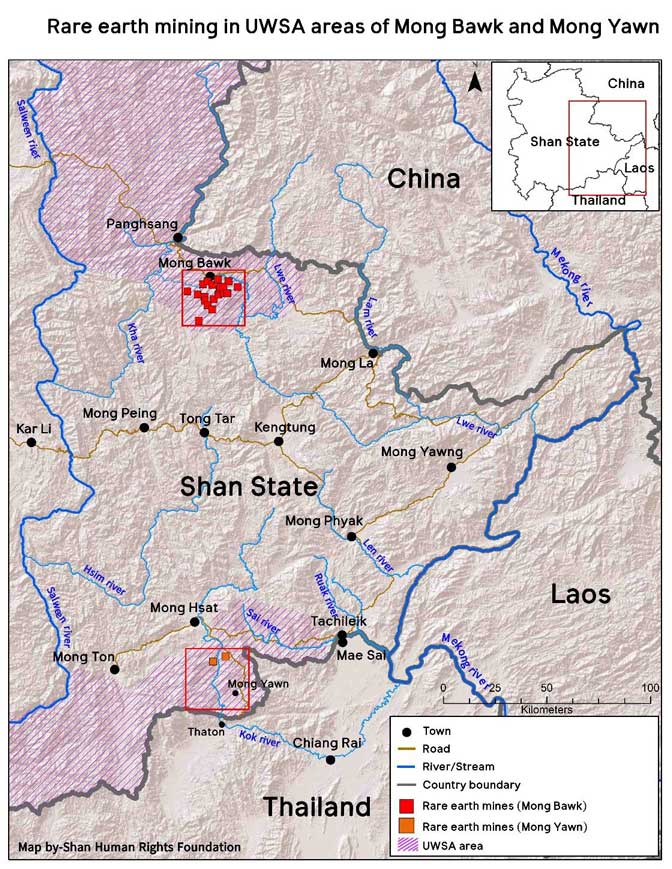
Direct Threat to the Mekong River and Golden Triangle
The environmental risks are immediate and severe. Wastewater from most mines is discharged into channels that feed into the Loi River, a tributary of the Mekong. This polluted water eventually enters the Mekong at Sop Loei, in Laos's Luang Namtha province—approximately 125 kilometers from the Golden Triangle in Chiang Saen district, Chiang Rai province, Thailand. Alarmingly, four of the mines drain directly into the Mekong opposite Luang Namtha, bypassing any natural filtration.
This setup mirrors the 2010 Kok River pollution incident, where mining runoff caused widespread contamination, affecting fisheries, agriculture, and human health. SHRF warns that toxic heavy metals from REE extraction could similarly infiltrate the Mekong, endangering the livelihoods of millions in the Golden Triangle—a region already vulnerable due to its strategic location at the confluence of Myanmar, Laos, and Thailand.
Beyond REE operations, numerous manganese mines dot the Loi River banks, stretching over 8 kilometers along the Myanmar-China border. These are interspersed with the REE sites, amplifying cumulative pollution. Historical precedents underscore the danger: In 2006, the Lahu National Development Organization (LNDO) documented how a manganese mine in the area drew over 1,000 Chinese workers, severely impacting the environment and health of at least two villages in An-Loi La.
Crucial Role of Satellite Imagery in Uncovering the Crisis
The rapid detection of the 19 rare earth mines in Myanmar’s Shan State owes much to advanced Satellite Imagery Report provided by OnGeo Intelligence. By comparing detailed imagery documented the alarming expansion from three to 19 operational sites, revealing the scale of the environmental threat. This cutting-edge technology was instrumental in exposing the chemical-intensive operations and their potential to contaminate the Golden Triangle, underscoring the power of satellite monitoring in addressing urgent ecological concerns.
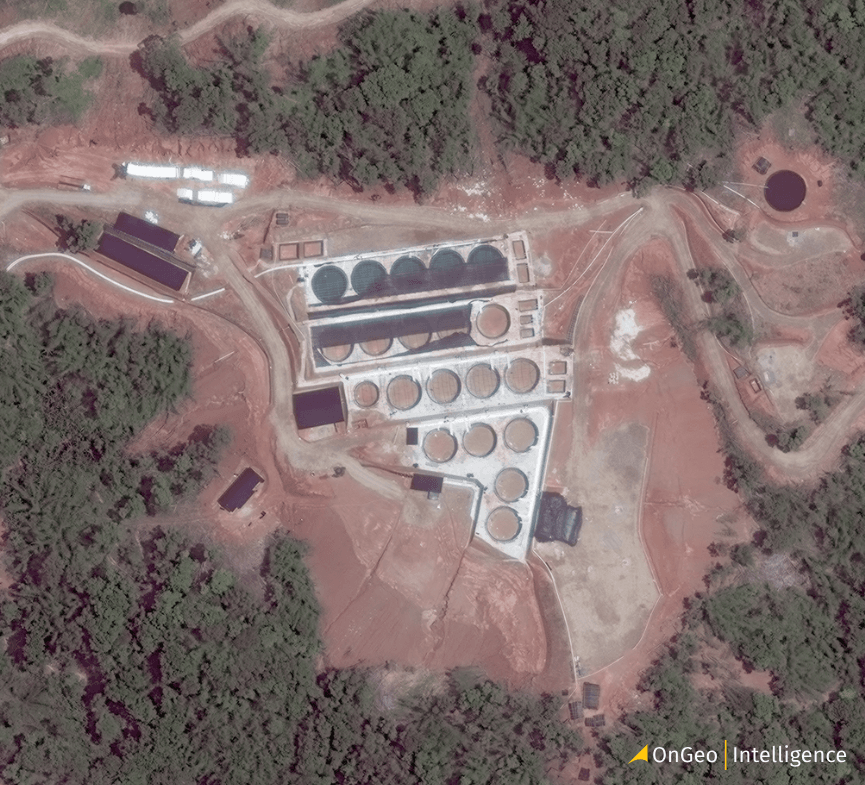
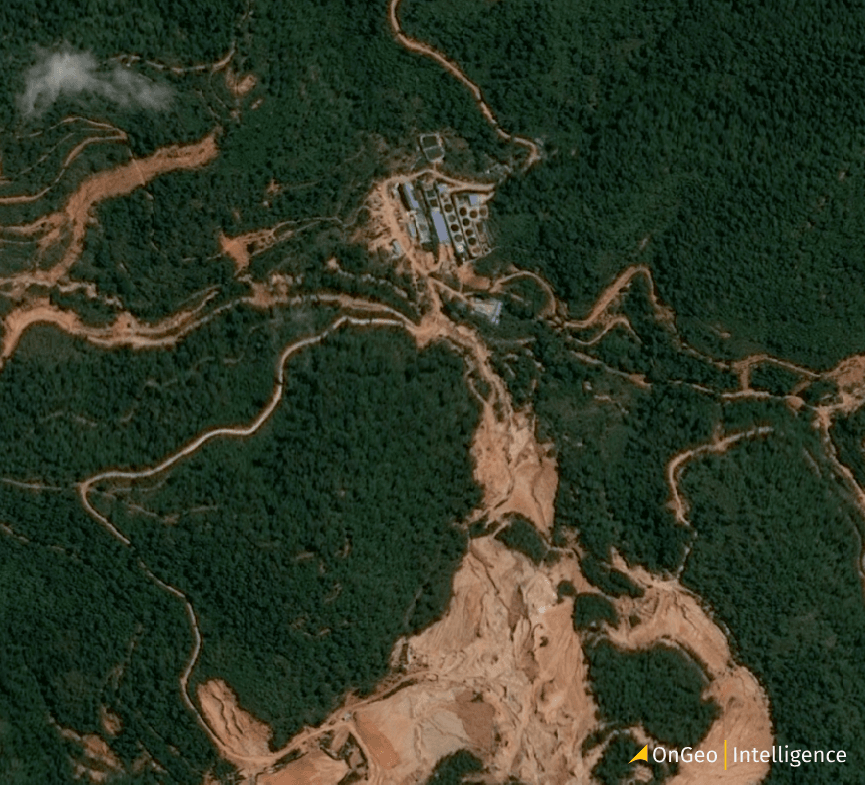
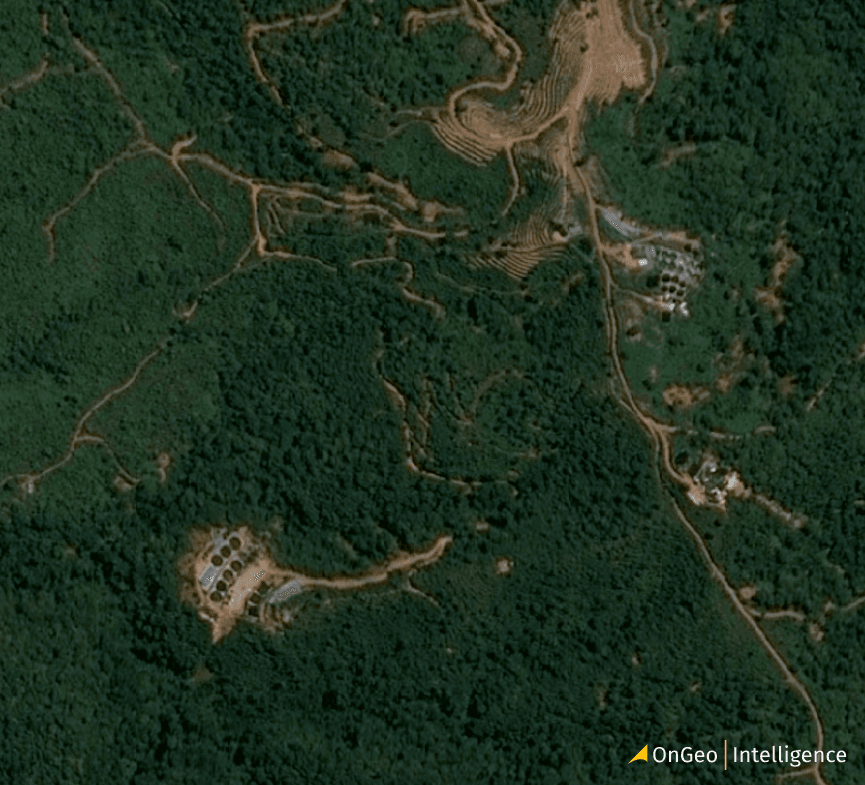
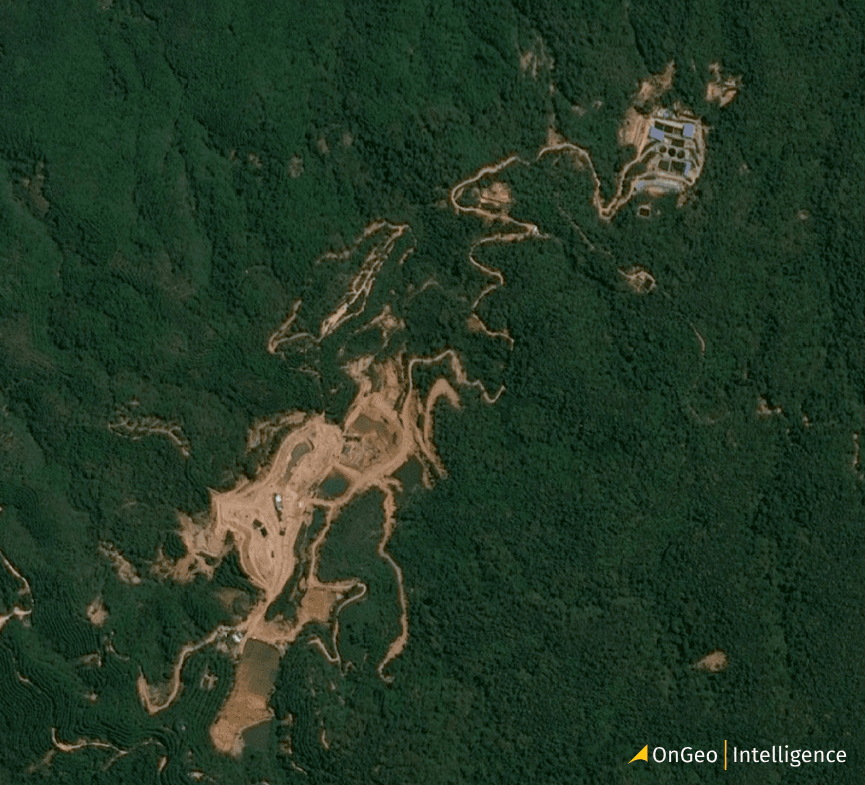
Escalating Environmental Crisis: Rare Earth Mines Threaten Mekong River
The discovery of 19 rare earth element (REE) mines in eastern Shan State, Myanmar, near the Mekong River has sparked urgent concerns over potential toxic contamination, reminiscent of the Kok River disaster. The Shan Human Rights Foundation (SHRF) has highlighted the environmental and health risks posed by these rapidly expanding operations, which are situated in a politically sensitive region under the influence of the National Democratic Alliance Army (NDAA). Key details include:
- Rapid Expansion: Satellite imagery shows a surge from three mines in 2021 to 19 by 2025, with 16 fully operational and three under construction as of May 2025.
- Proximity to Waterways: Most mines discharge wastewater into the Loi River, a Mekong tributary, while four directly release into the Mekong opposite Luang Namtha, Laos, just 125 km from the Golden Triangle.
- Chemical Pollution: Thousands of chemical bags and injection pipes are used for ore dissolution, risking heavy metal contamination of the Mekong.
- Additional Mining: Manganese mines along an 8-km stretch of the Myanmar-China border exacerbate environmental degradation, with historical impacts noted by the Lahu National Development Organization in 2006.
- Regional Risks: Two additional REE mines in Mong Hsat, near Thailand’s Kok River, further threaten transboundary pollution.
Immediate action is critical to prevent an ecological catastrophe in this vital Southeast Asian waterway.
Political and Military Ties Amidst Environmental Concerns
The SHRF statement also notes recent high-level meetings that may signal official complicity or oversight. On August 7, 2025, Aung Aung, the Shan State minister appointed by Myanmar's military government, and Major General So Hlaing, commander of the Triangle Region, visited Mong La—the capital of Special Region 4 - to meet NDAA leaders. Details of the discussions remain undisclosed. The day prior, on August 6, the same delegation conferred with leaders of the United Wa State Army (UWSA) in Special Region 2, at Mong Paok and Pang Sang.
These interactions occur against a backdrop of Myanmar's ongoing political instability, where armed groups like the NDAA control resource-rich territories. The mines' proximity to China suggests cross-border economic interests, potentially fueling unchecked extraction.
Additional Mines Near Thai Border Heighten Regional Risks
Satellite imagery further exposes two more REE mines in Mong Hsat district, on the Thai-Myanmar border near Mae Ai district in Chiang Mai province, Thailand. These sites are located just 3.6 km east and 2.6 km west of the Kok River, heightening fears of repeated contamination. If unchecked, runoff could flow into the Kok, exacerbating transboundary pollution and straining relations between Myanmar and its neighbors.
Calls for Urgent Action and International Scrutiny
Environmental advocates and human rights groups are urging immediate intervention. The SHRF emphasizes the need for independent monitoring, stricter regulations, and cessation of chemical discharges to prevent an ecological catastrophe. With the Mekong supporting over 60 million people for water, food, and transportation, any contamination could have far-reaching consequences.
This discovery underscores the hidden costs of the global rare earth supply chain, often concentrated in conflict zones with lax oversight. As demand for these critical minerals grows, so does the imperative for sustainable practices to safeguard vital waterways like the Mekong.
Stay tuned for updates as international organizations and governments respond to this emerging crisis. For more on environmental threats in Southeast Asia, follow our coverage on rare earth mining impacts.